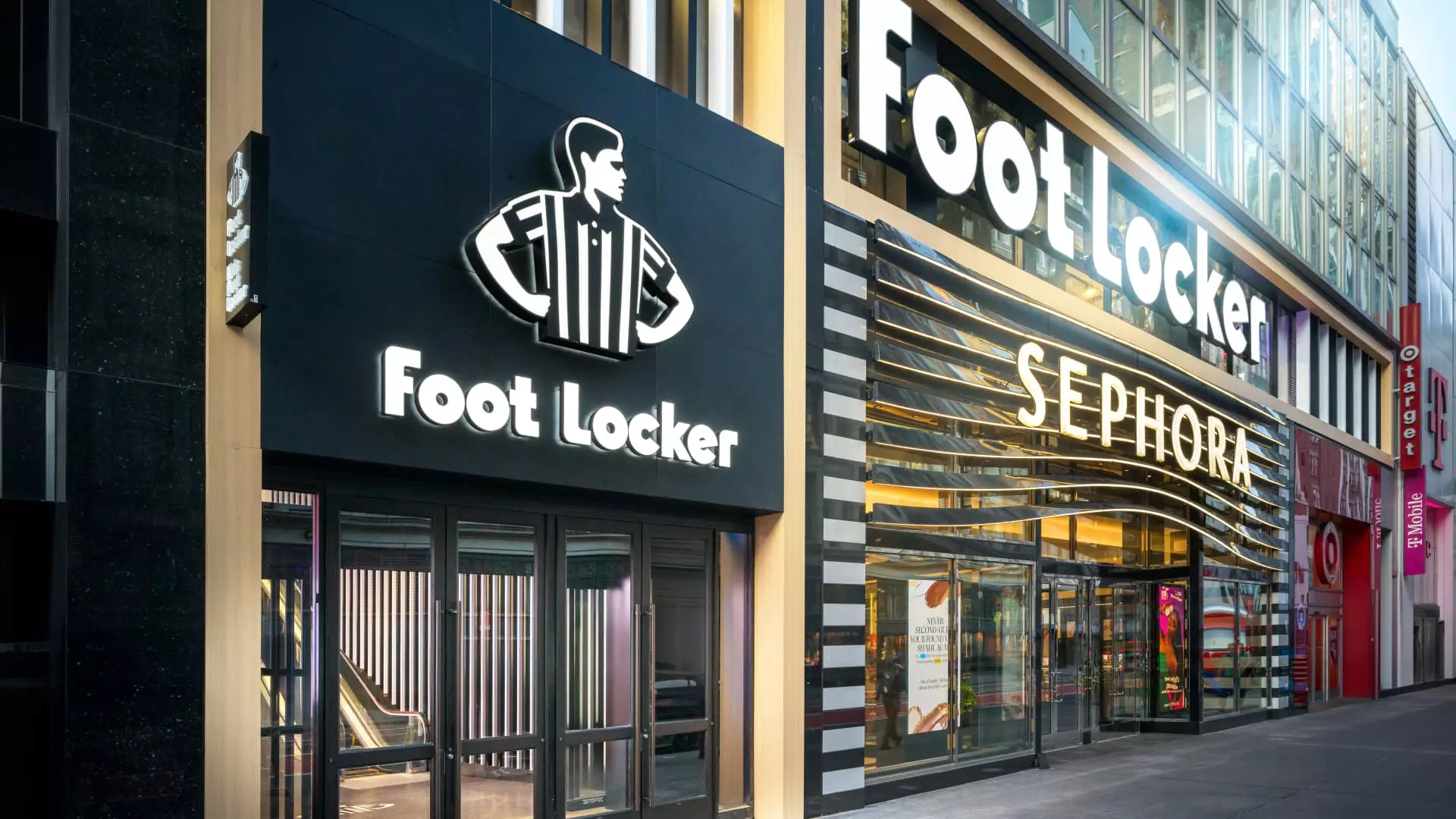Foot Locker recently revealed some disappointing financial results, leading the company to significantly lower its guidance for the rest of the fiscal year. The fourth-quarter earnings report, which diverged starkly from the expectations of analysts on Wall Street, compounded concerns about the future of its partnership with Nike, the company’s largest brand partner, which accounts for a staggering 60% of Foot Locker’s sales. The results prompted a steep decline in Foot Locker’s shares, dropping 15% in premarket trading as investors reacted to the gloomy forecast.
For the quarter ending Nov. 2, Foot Locker managed to bring in $1.96 billion in revenue, falling short of the analysts’ forecast of $2.01 billion. The company also posted a loss of $33 million, equating to a 34-cent loss per share, contrasting with the previous fiscal year’s profit of $28 million. Adjusting for one-time items, the earnings settled at $31 million or 33 cents per share. While this performance marked a slight decrease from the previous year’s earnings of $1.99 billion, the downward spiral in consumer demand and excessive promotional activities across the marketplace could be to blame. Foot Locker’s CEO, Mary Dillon, expressed concerns regarding the “soft consumer demand,” particularly in the context of a market providing a slew of promotions.
Dillon noted that while Foot Locker experienced peaks in sales during prominent shopping events like back-to-school periods and the holiday season, there have also been notable valleys in activity during off-peak times. This cyclical behavior suggests a significant shift in consumer spending patterns. Shoppers appear to be more selective, driven perhaps by economic uncertainty that has affected consumer confidence and spending power. As the market constantly shifts, retailers are grappling with the complexities of meeting consumer demands while managing inventory and promotional strategies effectively.
At the same time, Foot Locker finds itself contending with a decline in demand for Nike’s products. This slowdown seems to stem from Nike’s over-reliance on familiar product styles that may no longer resonate with the changing tastes of customers. Nike recently welcomed Elliott Hill as its new CEO, yet uncertainty looms as Wall Street awaits an overhaul in strategy, making potential repercussions for Foot Locker all too clear. If Foot Locker’s primary supplier struggles, it’s likely that the retail chain will suffer collateral damage.
The altered guidance for Foot Locker illustrates the severity of its situation. The company now anticipates year-end sales to drop between 1% and 1.5%, a downgrade from previous forecasts that suggested potential growth. The disappointing forecast is compounded by expectations of a decline in comparable sales, which were adjusted to a range of 1.5% to 3.5% growth from an earlier estimate of 1-3%. Analysts had previously projected a much stronger 3.4% growth in comparable sales.
Foot Locker also revised its earnings expectations down to a range between $1.20 and $1.30 per adjusted share, far removed from Wall Street’s anticipations of $1.54. These projections highlight a broad concern in the retail environment—how external pressures, including inflation and evolving customer expectations, can hinder growth prospects.
Positive Signs Amid Gloom
Despite the setbacks, not all news is bleak. In stark contrast to its overall performance, Foot Locker recorded a 2.4% increase in comparable sales for the quarter, despite analysts expecting higher numbers. Notable gains were also reported in its Champs and WSS divisions, with growth rates of 2.8% and 1.8%, respectively. This could suggest that Foot Locker’s recovery plans, led by Dillon’s strategies, are beginning to show dividends in specific areas, even if the overall numbers remain underwhelming.
Moreover, Foot Locker did manage to improve its gross margin by 2.3 percentage points primarily due to reduced promotional activity compared to the previous year. The company is remaining focused on refurbishing stores and optimizing its operations, demonstrating a commitment to improving its retail experience while navigating stressful market conditions. Dillon remains optimistic about the trajectory of the business despite the currently competitive and promotional landscape.
Foot Locker’s recent financial struggles emphasize the complexities of running a retail operation in today’s economic environment. With changing consumer behaviors, heavy reliance on key brand partners, and a competitive marketplace, challenges are abundant. However, despite the darker clouds, glimmers of hope exist in specific segments of the business. As Foot Locker pursues its refurbishment initiatives and leverages its relationships with vendors, the company’s ability to navigate these challenges will become a defining factor in its future success. The expectation remains that resilience and adaptive strategies will be necessary as Foot Locker seeks to rebound in the face of adversity.

